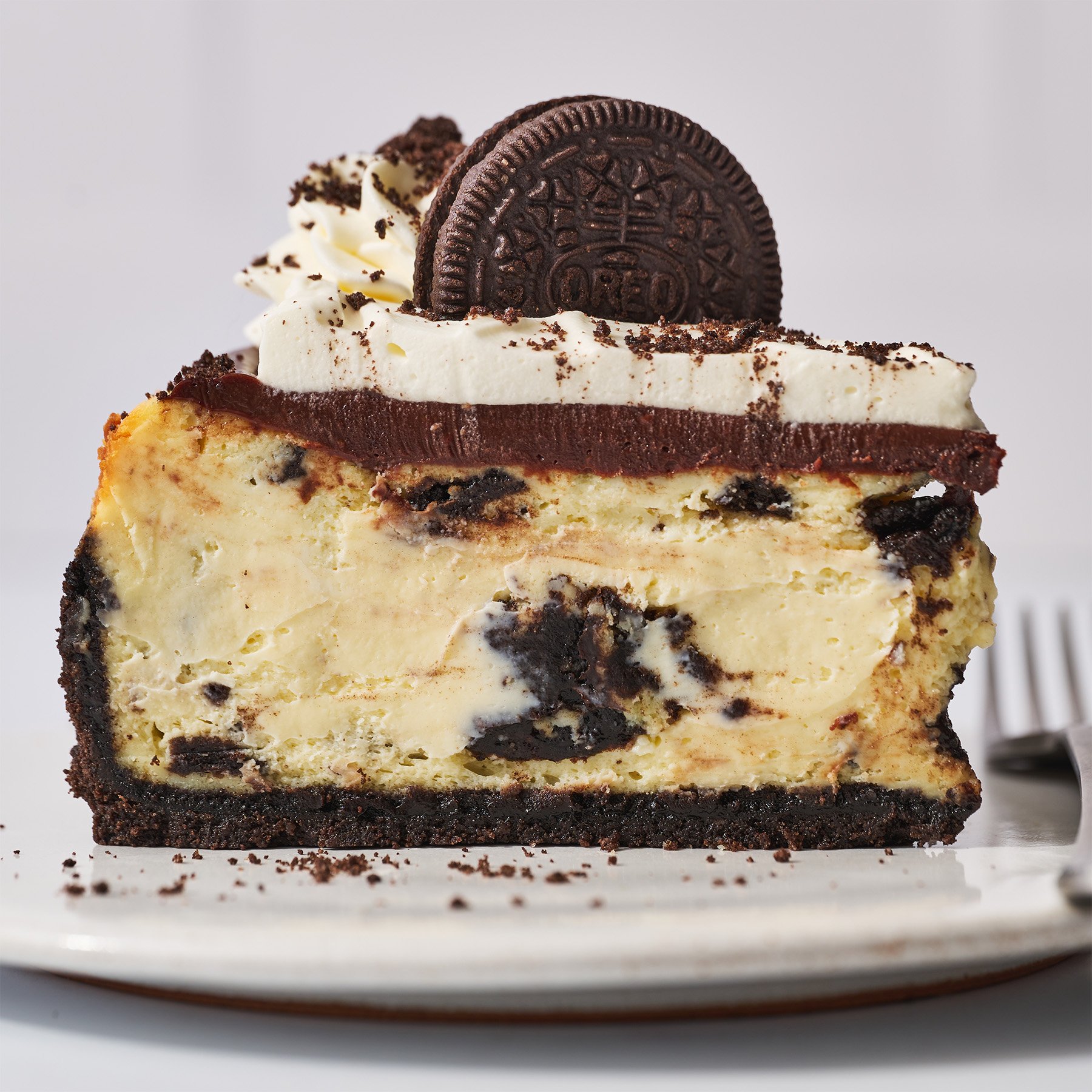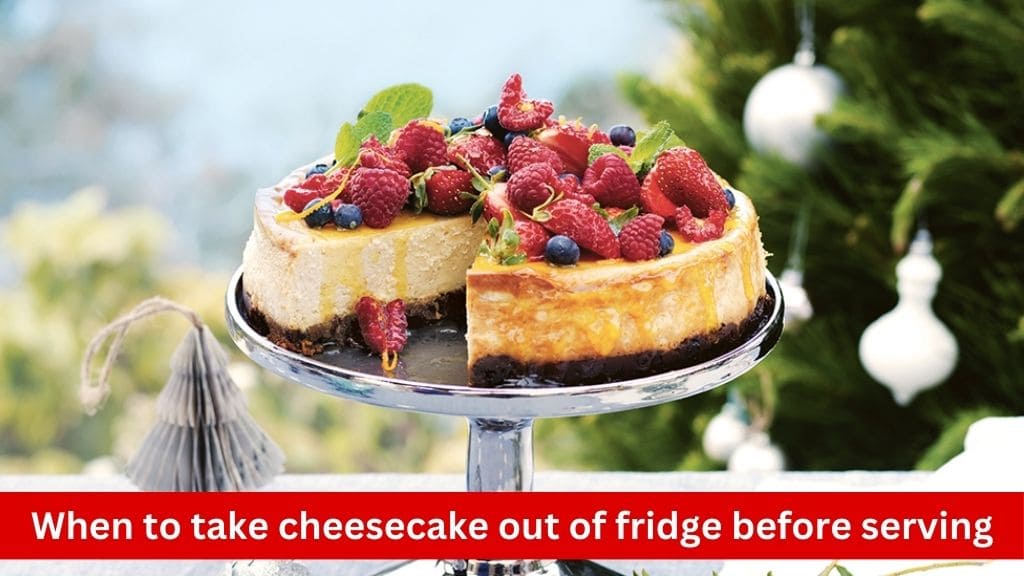Cheesecake, with its rich, creamy texture and indulgent flavors, is a dessert loved by many. However, achieving the perfect serving temperature can be crucial to fully enjoying its taste and texture. In this guide, we’ll delve into the art of timing – when to take your cheesecake out of the fridge before serving to ensure optimal deliciousness.
Understanding the Importance of Temperature

Texture:
The texture of cheesecake is greatly influenced by its temperature. When cheesecake is too cold, it becomes firm and dense, which can mask the creamy and smooth consistency that is characteristic of a well-made cheesecake. This overly firm texture can also make it difficult to fully appreciate the flavors and richness of the dessert. On the other hand, serving cheesecake at the optimal temperature allows it to soften slightly, resulting in a luxurious, melt-in-your-mouth experience that truly showcases the skill and craftsmanship that went into its creation.
Flavor:
Temperature plays a significant role in how we perceive flavor. Cheesecake that is served too cold may have muted flavors, as the chill can dull the taste buds and inhibit the release of the dessert’s full aroma. By allowing cheesecake to come to the right temperature before serving, you ensure that its flavors are vibrant and pronounced, tantalizing the taste buds with each bite. Whether it’s the tanginess of the cream cheese, the sweetness of the toppings, or the subtle hints of vanilla and citrus, serving cheesecake at the optimal temperature allows all the flavors to harmonize beautifully, creating a truly memorable culinary experience.
Presentation:
In addition to texture and flavor, temperature also affects the presentation of cheesecake. When served too cold, cheesecake can be difficult to slice cleanly, leading to jagged edges and uneven portions. This not only detracts from the visual appeal of the dessert but can also make it challenging to serve elegantly. By allowing cheesecake to reach the perfect serving temperature, you ensure that it maintains its shape while still being easy to slice and serve. This attention to detail enhances the overall dining experience, elevating a simple dessert into a gourmet indulgence that is as pleasing to the eye as it is to the palate.
Factors Influencing Serving Temperature

Type of Cheesecake:
Different types of cheesecake may require different serving temperatures based on their ingredients, textures, and flavor profiles. For example:
- Classic New York Cheesecake: This dense and rich cheesecake is typically best served at or slightly below room temperature to allow its creamy texture and rich flavor to shine.
- No-Bake Cheesecake: Since no-bake cheesecakes often contain ingredients like whipped cream or gelatin to achieve a lighter texture, they are typically served chilled to maintain their structural integrity.
- Fruit-Infused Cheesecake: Cheesecakes featuring fresh fruit or fruit compote may benefit from being served slightly cooler to enhance the freshness and brightness of the fruit flavors.
Toppings and Additions:
The toppings and additions incorporated into the cheesecake can also influence the ideal serving temperature. For example:
- Chocolate Ganache: Cheesecakes topped with a rich chocolate ganache may be best served slightly chilled to prevent the ganache from becoming too soft and losing its shape.
- Fruit Compote: Cheesecakes adorned with a vibrant fruit compote may be served slightly cooler to highlight the freshness and tartness of the fruit.
- Whipped Cream: Cheesecakes garnished with whipped cream are typically served chilled to maintain the stability of the whipped topping and prevent it from melting.
Personal Preference:
Ultimately, personal preference plays a significant role in determining the serving temperature of cheesecake. Some individuals may prefer their cheesecake served chilled for a refreshing and light dessert experience, while others may enjoy it at room temperature for a creamier and more indulgent treat. Additionally, factors such as cultural norms, regional traditions, and dining preferences may influence how cheesecake is served and enjoyed.
Optimal Serving Temperatures for Cheesecake

Room Temperature:
Serving cheesecake at room temperature is often considered ideal for allowing its flavors and textures to fully develop and be appreciated. When served at room temperature:
- Texture: Cheesecake becomes softer and creamier, allowing its velvety texture to shine through. The cream cheese filling becomes more luscious and luxurious, melting in your mouth with each bite.
- Flavor: Allowing cheesecake to warm up to room temperature enhances the depth and complexity of its flavors. The subtle nuances of ingredients like cream cheese, eggs, and vanilla are more pronounced, creating a truly decadent taste experience.
- Presentation: At room temperature, cheesecake is easier to slice and serve, maintaining its shape without crumbling or falling apart. This ensures that each slice is beautifully presented and visually appealing.
Chilled:
While room temperature is often preferred for serving cheesecake, certain varieties may benefit from being served chilled. When served chilled:
- Structure: Chilling cheesecake helps it retain its shape and firmness, making it easier to slice and serve without the risk of it collapsing or losing its structure.
- Toppings: Cheesecakes with delicate toppings like fresh fruit or whipped cream remain stable and visually appealing when chilled. This prevents toppings from wilting, melting, or sliding off the cheesecake.
Freshness:
Chilling the cheesecake just enough enhances the freshness and brightness of fruit flavors, such as those found in Strawberry Cheesecake or Lemon Coconut Cheesecake. This temperature balance preserves the natural essence of the fruits without compromising the creamy texture of the cheesecake.
Timing Recommendations

Overnight in the Refrigerator:
For cheesecakes that have been stored in the refrigerator, allowing them to sit overnight is often the recommended method for achieving the optimal serving temperature. Here’s why:
- Gradual Thawing: Allowing the cheesecake to thaw slowly in the refrigerator overnight ensures that it thaws evenly and gently. This gradual thawing process prevents the cheesecake from becoming overly soft or losing its structural integrity.
- Creamy Texture: Overnight thawing at refrigerator temperatures allows the cheesecake to reach the ideal serving temperature without becoming too cold or too warm. This results in a creamy texture that is smooth and velvety, enhancing the overall enjoyment of the dessert.
Counter Defrosting:
If you’re short on time or forgot to thaw the cheesecake overnight, you can opt for counter defrosting. Here’s how it works:
- Faster Thawing: Defrosting the cheesecake on the counter allows it to thaw more quickly compared to refrigerated thawing. However, it’s important to note that this method requires careful monitoring to prevent the cheesecake from reaching unsafe temperatures.
- Planning Ahead: To defrost a refrigerated cheesecake on the counter, plan ahead and allow 4-5 hours of defrosting time before serving. This ensures that the cheesecake reaches the desired serving temperature while minimizing the risk of bacterial growth or foodborne illness.
Planning Ahead:
To ensure that your cheesecake is ready to serve when desired, it’s helpful to plan ahead and consider the following:
- Timing: Plan ahead by removing the cheesecake from the refrigerator the night before serving or in the morning if serving in the evening. This allows ample time for the cheesecake to thaw gradually and reach the optimal serving temperature without rushing the process.
- Covering: While thawing on the counter, ensure that the cheesecake is covered to prevent contamination and to preserve its freshness. Use a clean kitchen towel or plastic wrap to cover the cheesecake and protect it from airborne contaminants.
Tips for Serving Cheesecake
:max_bytes(150000):strip_icc()/Simply-Recipes-No-Bake-Cheesecake-LEAD-19-db180177747b435481d8870b38893a53.jpg)
Use a Hot Knife:
One of the key tips for serving cheesecake is to use a hot knife for slicing. Here’s why it’s important:
- Clean Slices: Dipping a sharp knife in hot water before slicing helps to heat the blade, allowing it to glide smoothly through the cheesecake without sticking or dragging. This results in clean, neat slices that are visually appealing and maintain the integrity of the dessert.
- Prevents Crumbling: A hot knife also helps to prevent the cheesecake from crumbling or tearing as it is sliced. The heat from the knife gently melts the edges of the cheesecake, creating clean cuts that hold together beautifully.
- Smooth Presentation: Wiping the knife with a damp towel between each slice ensures that each cut is precise and free from any residual crumbs or cheesecake residue. This attention to detail enhances the presentation of the dessert and elevates the dining experience for your guests.
Portion Control:
Another important aspect of serving cheesecake is practicing portion control. Here’s why it matters:
- Uniform Slices: When serving cheesecake, it’s important to cut uniform slices to ensure that each portion is consistent in size and presentation. This allows guests to enjoy equal servings of the delicious dessert without feeling shortchanged or overwhelmed by large slices.
- Maximizes Servings: Practicing portion control also ensures that you can serve more guests with each cheesecake, maximizing the number of servings and minimizing waste. By cutting smaller, more manageable slices, you can stretch the dessert to accommodate a larger number of guests, making it a more economical and practical choice for entertaining.
Watch for Fast Hands:
Finally, it’s essential to keep an eye out for eager hands trying to grab slices of cheesecake before you’ve had a chance to finish cutting. Here’s why it’s important:
- Prevents Accidents: Cheesecake tends to disappear quickly once it’s served, especially if it’s a crowd favorite. Watching for fast hands helps to prevent accidents and ensure that everyone gets a fair share of the dessert without any mishaps or injuries.
- Maintains Presentation: By controlling the pace at which the cheesecake is served, you can maintain the presentation of the dessert and ensure that each slice is presented with care and attention to detail. This enhances the dining experience for your guests and reflects positively on your hosting skills.
Conclusion
Achieving the perfect serving temperature for cheesecake is essential for maximizing its flavor, texture, and overall enjoyment. Whether you prefer your cheesecake chilled, at room temperature, or slightly cool, understanding when to take it out of the fridge before serving is key. By following the recommendations outlined in this guide and considering factors like type of cheesecake and personal preference, you can ensure that every slice of cheesecake is a delectable delight.

